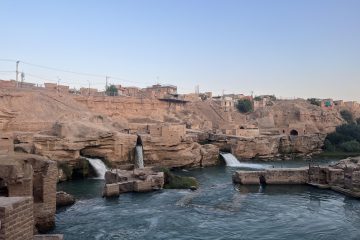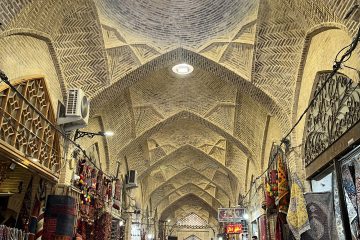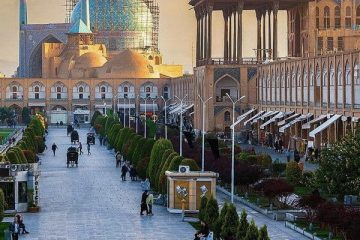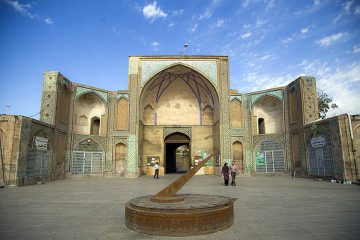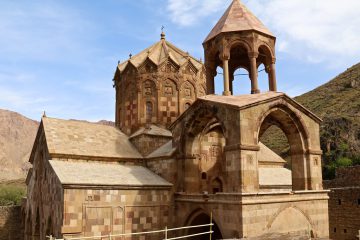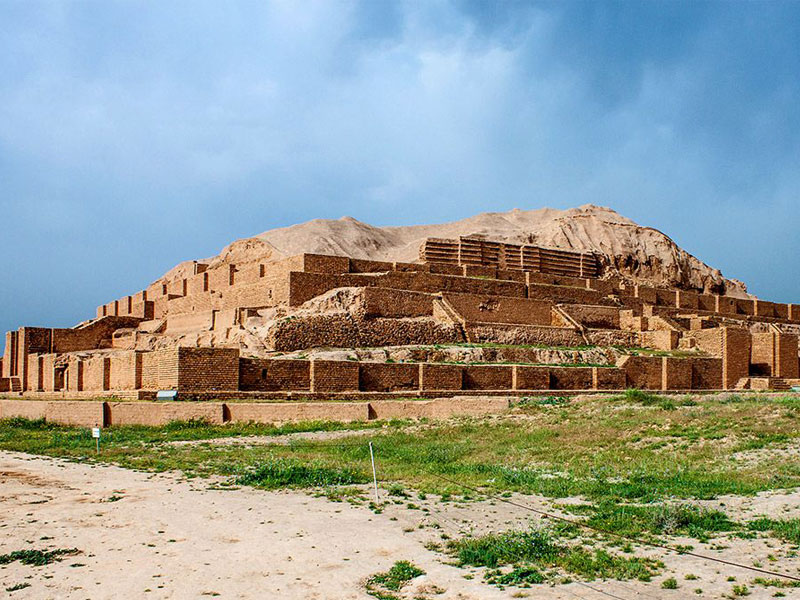
Tchogha-zanbil ! MUST PLACE TO VISIT
Tchogha-Zanbil, formerly known as Dur Untash, is a captivating historical site that offers a glimpse into the grandeur of the past. This ancient wonder was established as a religious capital during the Elamite period and is nestled along the Ab-e Diz, a tributary of the Karun River. It owes its founding to Untash-Napirisha, who reigned from 1275 to 1240 BC. Situated midway between Anshân and Susa, this remarkable city holds a unique place in history, inviting you to uncover its intriguing story.
Renowned archaeologist Roman Ghirshman dedicated over a decade, from 1951 to 1962, to excavate Tchogha-Zanbil, uncovering its mysteries and revealing its treasures. What sets this site apart is the presence of Mesopotamia’s largest and best-preserved ziggurat. Delving into this ancient marvel, you’ll step back in time to an era when this city thrived as a hub of culture, religion, and power.
The Ziggurat: A Towering Marvel
Prepare to be truly amazed by the ziggurat at Tchogha-Zanbil. This architectural wonder had humble beginnings as a square temple devoted to the Sumerian deity Inshushinak. However, it underwent a remarkable transformation into the majestic ziggurat that dominates the site today.
What sets Tchogha-Zanbil’s ziggurat apart from the traditional Mesopotamian ones is its unique design. Instead of stacked stories, it features solid masses on the ground that stretch across the central court. Access to this towering structure was ingeniously hidden with a vaulted staircase, cleverly concealed from prying eyes—an intriguing departure from the external staircases commonly found in Mesopotamian ziggurats.
While the ziggurat now stands at a still-impressive 25 meters in height, it’s incredible to imagine that it once soared to a towering 60 meters before the passage of time took its toll. This ziggurat holds immense significance not only for Inshushinak but also for Napirisha, the god of Anshân
Exploring Temples and Enclosures at Tchogha-Zanbil
On the northwest side of the ziggurat, a collection of temples dedicated to the lesser-known deities Ishnikarab and Kiririsha awaits your discovery. Enclosed within an oval wall, these temples provide valuable insights into the spiritual practices of the ancient era.
Venturing into the second enclosure, you’ll encounter a trapezoidal area that may seem empty today, but it once played a crucial role in the city’s operations. In contrast, the third enclosure features only three palaces and a temple near the Royal Gate, all surrounding a spacious interior court. Interestingly, the houses of Dur Untash were never constructed within this enclosure, adding to the enigmatic history of the city.
Untash-Gal Palace and its Artifacts: A Glimpse into Ancient Life
One of the most captivating findings at Tchogha-Zanbil is the Untash-Gal Palace, dating back to the 13th century BC. This archaeological marvel offers a window into the architecture and way of life during the Elamite era. Despite the passage of time and the attributed destruction by the Assyrian conquest, the site yielded a rich trove of artifacts.
Among these discoveries were an array of heads, statuettes, animals, amulets, and even remnants of ivory mosaic panels. Delving deeper beneath the royal residence, explorations unveiled vaulted tombs that provided evidence of cremation, shedding light on the burial customs of the city’s ancient residents.
Close by, a temple dedicated to Nusku, the god of fire, reinforces the profound spiritual significance of Tchogha-Zanbil.
Ingenious Water Supply System
To meet the demands of its residents, Untash-Napirisha spearheaded an impressive engineering feat: a 50-kilometer-long channel designed to convey water to a reservoir located just beyond the city’s northern defenses. From this reservoir, nine conduits efficiently distributed filtered water to a strategically positioned basin within the city’s protective rampart. This remarkable water supply system underscores the advanced engineering skills of the Elamite civilization.
The Decline and Enduring Influence
Despite its grandeur, Dur Untash faced a decline in the 12th century BC as Elamite kings favored Susa over it. In a surprising turn of events, they relocated Tchogha Zanbil’s wealth to Susa, adorning recently restored temples with the treasures from their abandoned city. The Assyrian king Assurbanipal, who conquered Susa in 640 BC, sealed the fate of Dur Untash, reducing it to ruins just a few years later.
In summary, Tchogha-Zanbil, also known as Dur Untash, offers more than just an archaeological site; it’s a journey back in time, revealing the religious, architectural, and engineering achievements of the Elamites. A visit to this unique destination isn’t just a trip; it’s an opportunity to connect with the ancient world and witness the enduring legacy of a once-thriving civilization. So, plan your visit to Tchogha-Zanbil today and immerse yourself in the mysteries of this extraordinary place. Visit this ancient site in Glories of Persia Tour
Qashghai Nomads

